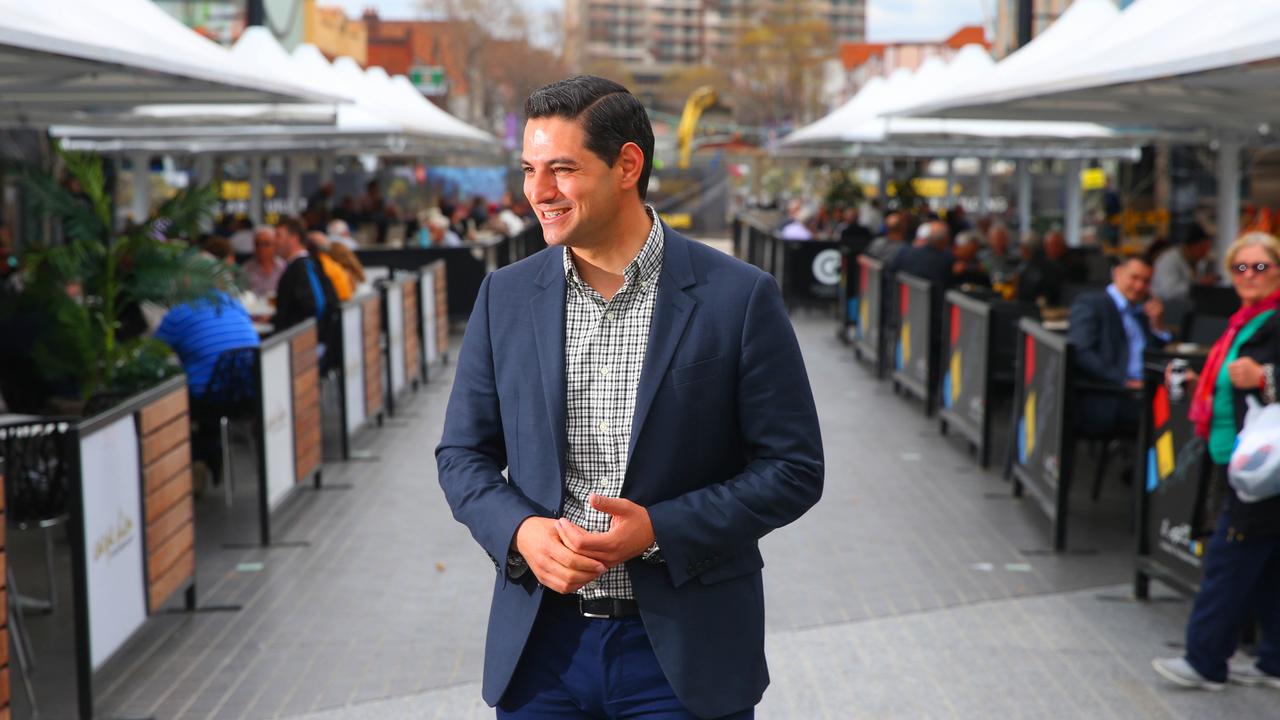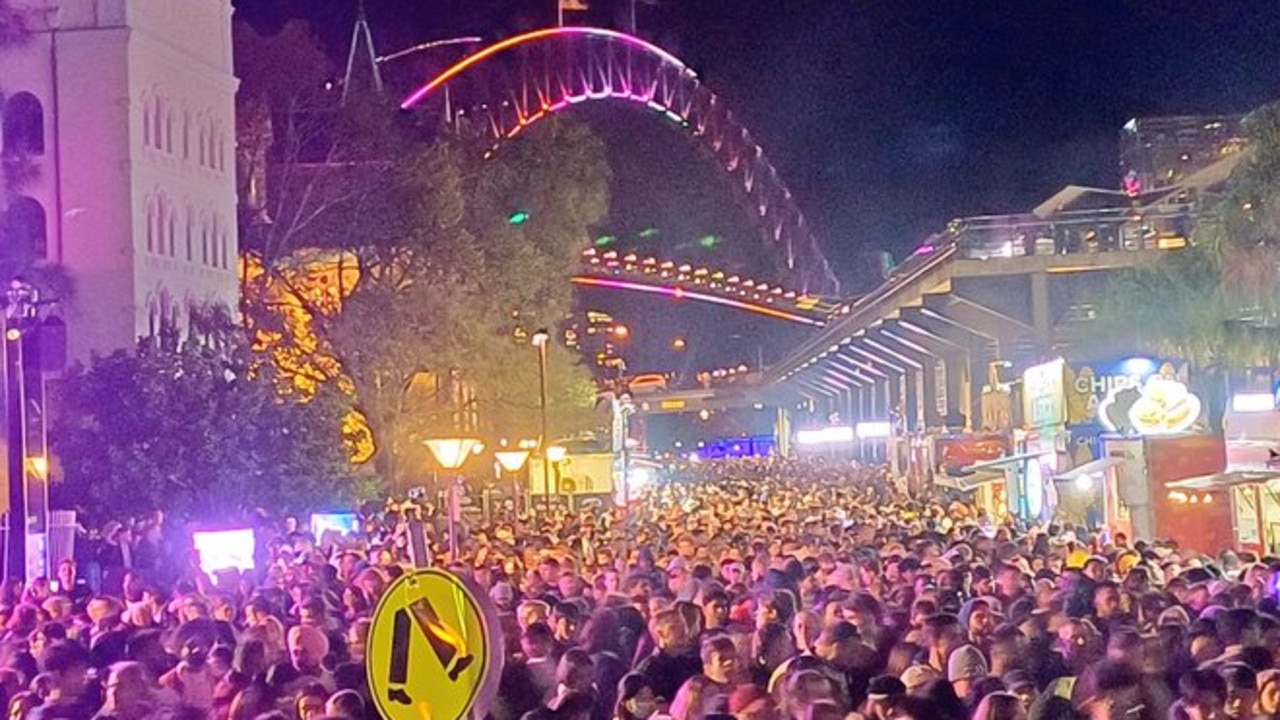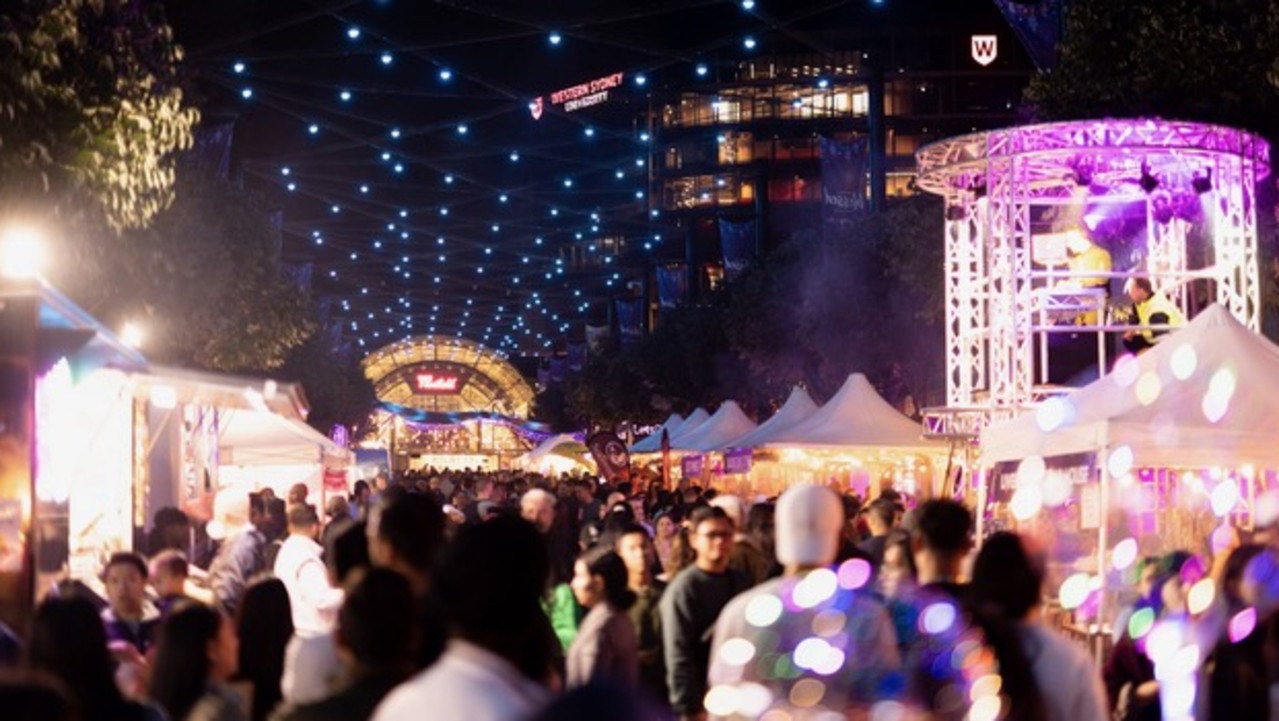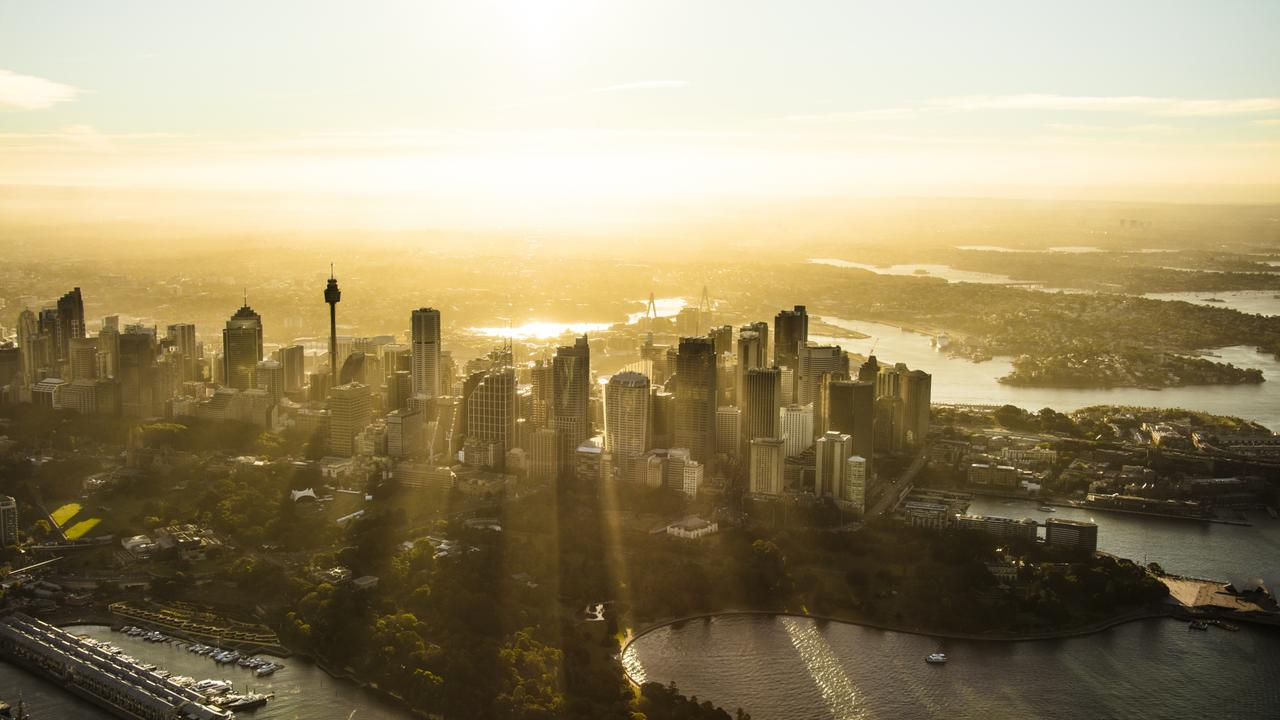‘Worst experience ever’: Mayor roasts Vivid as western Sydney street festivals reap $25 million
A mayor has roasted this year’s Vivid festival as the “worst experience ever”, while calling for more support for similar events in fast-growing areas out west.
EXCLUSIVE
A Sydney mayor has branded this year’s Vivid festival the “worst experience ever” and called for more support for similar cultural events outside the CBD.
And on the whole, he believes the over-regulated and over-tolled city is becoming “more of a headache” for people to visit.
“I brought my kids to Vivid. It was the worst experience ever,” said Liverpool Mayor Ned Mannoun.
“Loading them into the car, it’s so far to get there, $30 or $40 in tolls, you have to fight for a spot, pay for parking, it’s cold. It’s like, why are we doing this?”
Cr Mannoun has spearheaded Liverpool Council’s Experience the World program, a series of seven cultural events celebrating Liverpool’s diversity — including the hugely popular Most Blessed Nights street food market over March and April, which incorporated Ramadan, Orthodox Easter and Passover.
Analysis by the council suggests the events have resulted in a boost of more than $25 million to the local economy since last July, bringing more than 600,000 people to the city centre who spent an average of $41 each.
The analysis, conducted using the economy.id Event Impact Calculator, estimated the Macquarie Mall street parties had created 100 local jobs in that time.
Liverpool Council was awarded the Premier’s 2024 Business Excellence — Local Government Medal in April for the flagship program which had helped “develop and support a diverse local community”.
“Liverpool is a fast-growing area of south-west of Sydney and the face of multicultural Australia with 43.2 per cent of its residents born overseas,” the NSW government said.
“Experiencing substantial growth from urban release development and from redevelopment in established areas, Liverpool’s population is expected to almost double to more than 320,000 over the next 20 years.”

The Mayor said the goal for the Experience the World program was eventually to have an event or activity every weekend.
“Which will then lead to a rejuvenation of shops in the area,” he said. “This strategy ultimately is about rejuvenating, getting better shops, more activity and really improving the quality of life of the community. We can’t just go at it in one hit, it’s got to be a gradual process.”
Cr Mannoun said the NSW government had contributed $1 million over two years to fund the program but “the more the merrier”.
“For $5 million we could have something on every weekend,” he said.
“As you can see, tens of thousands of people are already enjoying themselves. In two years’ time people are going to be landing in Liverpool at the new airport. The question is where do these people go for fun? It’s important that places like Liverpool and Parramatta are activated.”
Eventually, Cr Mannoun wants Macquarie Mall to be seen as the “Darling Harbour” of south-west Sydney — an outdoor public space where people can come, stroll through markets and have a “good night”.
“Ideally the people of western Sydney want to go out and have fun and don’t want to travel into the city, which is becoming more of a headache from a time and expense point-of-view,” he said.
“That’s why we want the government to invest in events like this like [they do] Vivid.”
This year’s Vivid Sydney light festival, which ran from May 24 to June 15, was marred by crowd size safety concerns, $8.50 sausage sizzles and a “disappointing” final night as the drone show was cancelled.

Cr Mannoun said for residents who live further afield, increasingly it was not worth making the trip — not least because Sydney, it’s often claimed, is the “most tolled city in the world”.
“It’s nice if you live nearby and can walk into the city, but now it’s a question of equity,” he said.
“Sydney is actually the richest council, they have cash galore, assets galore, but they get the most subsidies. We take all the growth in western Sydney, especially the south-west. The government expects us to live here and have nothing to do — no sporting stadiums, we have to travel everywhere. [Liverpool is] within 30 minutes, it’s easy to get to, there’s plenty of parking, no tolls. It’s for everybody.”
As the NSW government seeks to tackle the housing crisis through sweeping zoning reforms to force the construction of more apartments, Cr Mannoun says supporting local communities with events and public spaces would be key.
“The government is out there pushing for everyone to put units up, more density,” he said.
“Someone is living in a little 60- to 80-square metre box, what do they do outside of that? I can’t understand how we make so many mistakes with housing. It’s not just about the box you live in, it’s things around like this.”
On the flip side, he argues more density is the only way to bring the dead Sydney CBD back to life.
The long, slow death of Sydney’s once-vibrant nightlife over the past decade has been a sore point for businesses — 2014’s lockout laws started the decline, while overzealous regulations, Covid lockdowns and soaring inflation have all contributed to turning the city into a desolate wasteland after dark.
The pandemic in particular was the final nail in the coffin for many struggling bars and restaurants, and councils have spent the past few years trying to rejuvenate struggling local communities with street festivals and other cultural events.

“You should have at least another 100,000 people living in the city centre,” said Cr Mannoun.
“There’s easily room for 200 buildings in the CBD with people in there. The height limit is too low. We’re a global city and nobody’s allowed to build a building bigger than Centrepoint. This is Sydney’s affordability issue. Imagine if you could put your key workers in affordable housing in the city centre — it wouldn’t be $1.5 million for an apartment — that would bring Sydney to life.”
Matthew Camenzuli, a former member of the NSW Liberal Party state executive, wrote last week that Sydney was “an effigy for Australia right now”.
“Cold, miserable and overfilled, with absolutely nothing to do,” the IT entrepreneur wrote in a viral post on X.
“While the slow destruction of Australia as an economic and social success has been a bipartisan affair, the same is true for the destruction of Sydney. I think the first blow came in the form of Mike Baird’s lockout laws … All to save us from one punch attacks, gee thanks Mike — now there is nowhere to go and nothing to do.”
Sydney is an effigy for Australia right now. Cold, miserable and over filled, with absolutely nothing to do. Well and truly gone are the heady days of “Breakfast at Sweetheartsâ€, released before I was even a year old. It foretold of fun times, things to look forward to. A… pic.twitter.com/3N6ptRw5i0
— Matthew Camenzuli (@Matt_Camenzuli) July 2, 2024
Mr Camenzuli argued it was “going to take more than a bit of government assistance to get her back on her feet again”, but “no matter how well meaning, we are not going to government grant our way out of this”.
“It is going to take local, state and federal governments to get right out of the way,” he said. “Deregulation is the only way to get our ailing city and flailing economy back up and alive again.”
In a speech last year to The SMH Sydney 2050 Summit, Freelancer chief executive Matt Barrie blamed Australia’s stifling bureaucracy for the decline of Sydney’s prestige as the “world’s best city for festivals and events seven years in a row”.
“Boy did we stuff it up,” he said.

“Last year, Sydney was ranked the third worst in the world for making friends by Time Out, the second worst nightlife in the Global Liveability Rankings, the sixth worst airport for cancellations and ninth for delay and the second least affordable city in the world.”
He recalled the difficulty trying to find a restaurant open after 9pm in the city. “The restaurant is trapped between astronomically high rent, labour costs and bureaucracy,” he said.
“On the flip side, despite the highest casual wages in the world, its workers can’t afford to live … I thought, Jesus Christ, they’ve stuffed up this city. How bad will they stuff it in 20 more?”
In October last year, the NSW government moved to repeal what it called “nanny state laws” covering live music venues and pubs.
The changes made it easier for clubs and hotels to host events and harder for noise complaints to shut them down.
Premier Chris Minns also announced new “order of occupancy” rules, meaning existing venues can’t be hit by new neighbours’ complaints “because all of a sudden they don’t like to have noise in the evening”.
More Coverage
“It’s another step in removing the nanny state restrictions, the red tape, that have really stifled the vibrancy, the life and the fun out of Sydney for the last 10 years,” Mr Minns said at the time.
“We will no longer allow just a single noise complaint to close down live music venues right across NSW. It’s not just there for the enjoyment of people in the local community. It’s a magnet for those who live and work in Sydney and also for people who want to visit our great city.”
Read related topics:Sydney






